-
 Bitcoin
Bitcoin $108,165.4587
0.78% -
 Ethereum
Ethereum $2,456.3517
1.15% -
 Tether USDt
Tether USDt $1.0003
0.00% -
 XRP
XRP $2.1934
0.05% -
 BNB
BNB $650.0935
0.52% -
 Solana
Solana $151.3905
2.69% -
 USDC
USDC $0.9998
0.00% -
 TRON
TRON $0.2751
-0.32% -
 Dogecoin
Dogecoin $0.1640
0.87% -
 Cardano
Cardano $0.5631
0.57% -
 Hyperliquid
Hyperliquid $38.7115
4.69% -
 Bitcoin Cash
Bitcoin Cash $493.1868
-0.39% -
 Sui
Sui $2.8217
3.61% -
 Chainlink
Chainlink $13.3994
2.08% -
 UNUS SED LEO
UNUS SED LEO $9.1632
0.94% -
 Avalanche
Avalanche $18.0318
1.97% -
 Stellar
Stellar $0.2388
0.35% -
 Toncoin
Toncoin $2.8763
1.41% -
 Shiba Inu
Shiba Inu $0.0...01160
1.59% -
 Litecoin
Litecoin $86.6393
1.29% -
 Hedera
Hedera $0.1485
0.16% -
 Monero
Monero $315.7948
1.56% -
 Polkadot
Polkadot $3.4240
1.88% -
 Bitget Token
Bitget Token $4.6314
-0.44% -
 Dai
Dai $0.9998
-0.01% -
 Ethena USDe
Ethena USDe $1.0002
-0.01% -
 Uniswap
Uniswap $7.2110
2.59% -
 Aave
Aave $270.6087
6.07% -
 Pi
Pi $0.5350
0.52% -
 Pepe
Pepe $0.0...09545
1.26%
How to set up stop-profit and stop-loss on OKX?
"Set up stop-profit and stop-loss orders on OKX to automate your crypto trades, secure profits, and limit losses in the volatile market."
Apr 02, 2025 at 02:14 pm
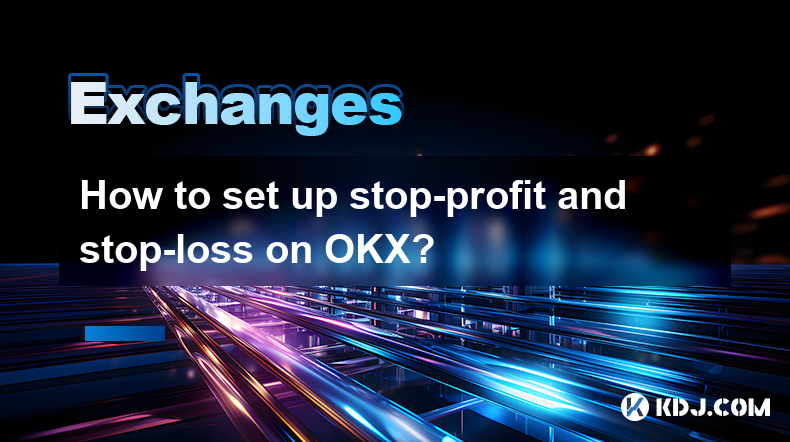
Setting up stop-profit and stop-loss orders on OKX can significantly help you manage your cryptocurrency trades more effectively. These tools allow you to automate the process of securing profits and limiting losses, which is crucial in the volatile crypto market. In this article, we will guide you through the steps required to set up these orders on the OKX platform, ensuring you can trade with greater confidence and control.
Understanding Stop-Profit and Stop-Loss Orders
Before diving into the setup process, it's essential to understand what stop-profit and stop-loss orders are. A stop-profit order, also known as a take-profit order, is designed to lock in profits once your asset reaches a specific price level. On the other hand, a stop-loss order is used to limit potential losses by selling an asset when it drops to a predetermined price. Both types of orders help automate trading decisions, reducing the emotional impact on your trading strategy.
Logging into OKX
To begin setting up your stop-profit and stop-loss orders, you first need to log into your OKX account. If you don't have an account yet, you can easily create one by visiting the OKX website and following the registration process. Once logged in, navigate to the trading section where you can access the spot or futures trading interface, depending on your trading preferences.
Accessing the Trading Interface
Once you're logged in, you'll need to select the trading pair you wish to trade. OKX offers a wide range of cryptocurrencies, so choose the one you're interested in. After selecting your trading pair, you'll be directed to the trading interface. Here, you'll find various options for placing orders, including the ability to set up stop-profit and stop-loss orders.
Setting Up a Stop-Profit Order
To set up a stop-profit order on OKX, follow these steps:
- Navigate to the trading interface for your chosen trading pair.
- Click on the "Order" tab and select "Stop-Limit Order."
- In the "Trigger Price" field, enter the price at which you want the order to be triggered. This is the price at which your asset needs to reach for the stop-profit order to activate.
- In the "Price" field, enter the price at which you want to sell your asset once the trigger price is reached.
- Specify the amount of cryptocurrency you want to sell in the "Amount" field.
- Review your settings and click "Buy/Long" or "Sell/Short" to place the order.
Setting Up a Stop-Loss Order
Setting up a stop-loss order is similar to setting up a stop-profit order. Here are the steps:
- Go to the trading interface for your chosen trading pair.
- Click on the "Order" tab and select "Stop-Limit Order."
- In the "Trigger Price" field, enter the price at which you want the order to be triggered. This is the price at which your asset needs to fall to for the stop-loss order to activate.
- In the "Price" field, enter the price at which you want to sell your asset once the trigger price is reached.
- Specify the amount of cryptocurrency you want to sell in the "Amount" field.
- Review your settings and click "Buy/Long" or "Sell/Short" to place the order.
Monitoring and Adjusting Your Orders
After setting up your stop-profit and stop-loss orders, it's crucial to monitor them regularly. Market conditions can change rapidly, and you may need to adjust your orders to reflect these changes. OKX provides real-time data and charts, allowing you to keep an eye on your trades and make necessary adjustments. You can modify or cancel your orders at any time through the trading interface.
Benefits of Using Stop-Profit and Stop-Loss Orders
Using stop-profit and stop-loss orders on OKX can offer several benefits. Firstly, they help you manage risk by automatically executing trades at predetermined levels, reducing the need for constant monitoring. Secondly, these orders can help you secure profits and limit losses, which is essential in the volatile crypto market. Finally, they allow you to implement a disciplined trading strategy, reducing the impact of emotional decision-making.
Common Mistakes to Avoid
While stop-profit and stop-loss orders can be powerful tools, there are some common mistakes to avoid. One mistake is setting your trigger prices too close to the current market price, which can result in your orders being triggered too frequently. Another mistake is neglecting to adjust your orders as market conditions change. It's also important to ensure you have sufficient funds in your account to cover any potential losses.
Advanced Tips for Using Stop-Profit and Stop-Loss Orders
For more experienced traders, there are advanced strategies you can employ with stop-profit and stop-loss orders. One strategy is using trailing stop orders, which allow you to set a stop-loss order that moves with the market price. This can help you lock in profits as the price of your asset increases. Another strategy is using multiple stop orders at different price levels to manage risk more effectively. Experimenting with these strategies can help you refine your trading approach.
Conclusion
Setting up stop-profit and stop-loss orders on OKX is a straightforward process that can significantly enhance your trading strategy. By following the steps outlined in this article, you can automate your trades, manage risk, and potentially increase your profitability. Remember to monitor your orders regularly and adjust them as needed to adapt to changing market conditions. With these tools at your disposal, you can trade with greater confidence and control.
Frequently Asked Questions
Q: What is the difference between a stop-profit and a stop-loss order?
A: A stop-profit order is used to secure profits by selling an asset when it reaches a specific price level. A stop-loss order, on the other hand, is used to limit losses by selling an asset when it drops to a predetermined price level. Both types of orders help automate trading decisions.
Q: How do I set up a stop-profit order on OKX?
A: To set up a stop-profit order on OKX, navigate to the trading interface for your chosen trading pair, click on the "Order" tab, select "Stop-Limit Order," enter the trigger price, the price at which you want to sell, and the amount of cryptocurrency you want to sell. Review your settings and click "Buy/Long" or "Sell/Short" to place the order.
Q: Can I adjust my stop-profit and stop-loss orders after placing them?
A: Yes, you can adjust your stop-profit and stop-loss orders at any time through the OKX trading interface. Simply go to the "Orders" section, find the order you want to modify, and make the necessary changes.
Q: What are some common mistakes to avoid when using stop-profit and stop-loss orders?
A: Common mistakes include setting trigger prices too close to the current market price, neglecting to adjust orders as market conditions change, and not ensuring sufficient funds in your account to cover potential losses. Being mindful of these pitfalls can help you use these orders more effectively.
Q: Are there any advanced strategies I can use with stop-profit and stop-loss orders?
A: Yes, advanced strategies include using trailing stop orders, which move with the market price to lock in profits, and setting multiple stop orders at different price levels to manage risk more effectively. These strategies can help you refine your trading approach and potentially increase your profitability.
Disclaimer:info@kdj.com
The information provided is not trading advice. kdj.com does not assume any responsibility for any investments made based on the information provided in this article. Cryptocurrencies are highly volatile and it is highly recommended that you invest with caution after thorough research!
If you believe that the content used on this website infringes your copyright, please contact us immediately (info@kdj.com) and we will delete it promptly.
- SEI TVL Soars, Price Hints at Breakout: What's Next?
- 2025-06-29 18:30:12
- Cardano, Bitcoin Cash, Remittix: Charting the Course for Crypto's Next Big Moves
- 2025-06-29 18:50:12
- Stock Market News, Weekly Review, June 2025: A Month of Crypto, Commodities, and Corporate Maneuvers
- 2025-06-29 18:30:12
- Vitalik Buterin, Sam Altman, and the World of Digital Identity: A Delicate Balance
- 2025-06-29 19:10:15
- Crypto Diplomacy Takes Root: Pakistan's Bitcoin Reserve Ambitions
- 2025-06-29 18:55:12
- Altcoins on the Rebound? Institutional Interest Ignites Recovery Hopes
- 2025-06-29 18:55:12
Related knowledge
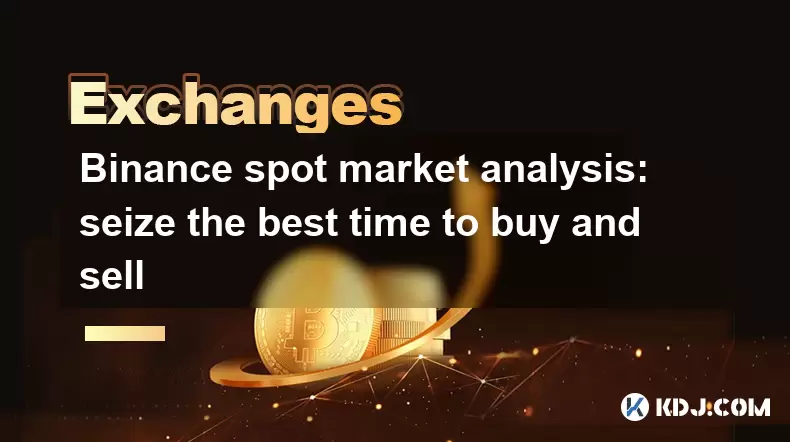
Binance spot market analysis: seize the best time to buy and sell
Jun 19,2025 at 04:56pm
Understanding the Binance Spot MarketThe Binance spot market is one of the most popular platforms for cryptocurrency trading globally. It allows users to trade digital assets at current market prices, making it essential for traders aiming to buy low and sell high. Unlike futures or margin trading, spot trading involves direct ownership of the asset aft...
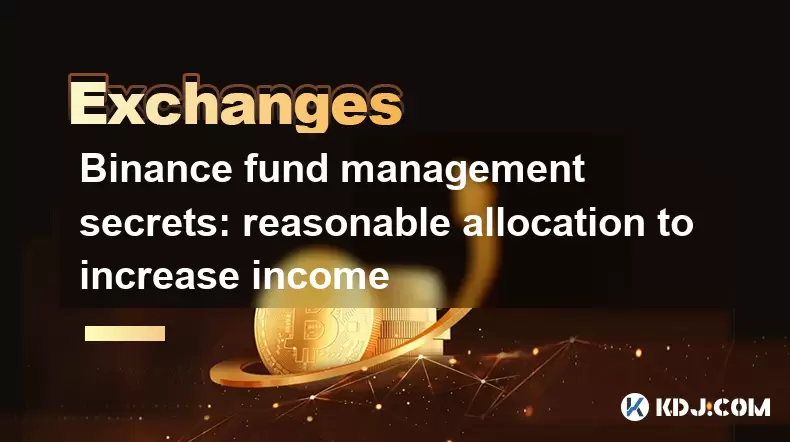
Binance fund management secrets: reasonable allocation to increase income
Jun 22,2025 at 02:29pm
Understanding Binance Fund ManagementBinance fund management involves strategic allocation of your cryptocurrency assets to optimize returns while managing risk. The key to successful fund management lies in understanding how different investment options on the Binance platform can be utilized to create a diversified portfolio. This includes spot tradin...
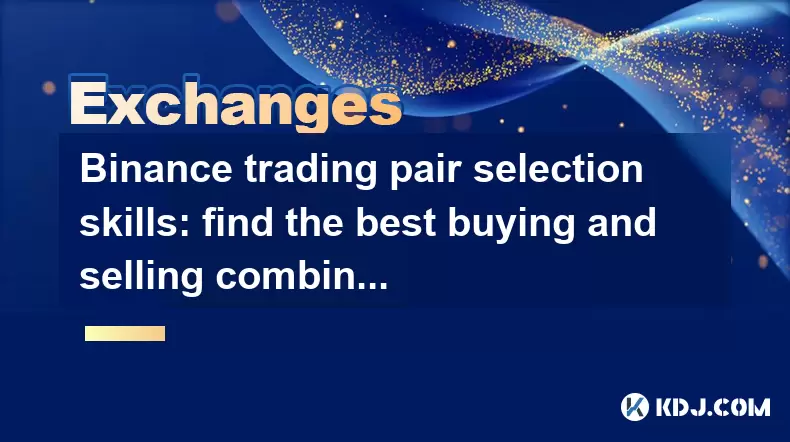
Binance trading pair selection skills: find the best buying and selling combination
Jun 23,2025 at 02:49am
Understanding the Basics of Trading Pairs on BinanceBefore diving into trading pair selection skills, it's essential to understand what a trading pair is. On Binance, a trading pair refers to two cryptocurrencies that can be traded against each other. For example, BTC/USDT means Bitcoin is being traded against Tether. Each trading pair has its own liqui...

Binance new coin mining strategy: participate in Launchpool to earn income
Jun 23,2025 at 11:56am
What is Binance Launchpool and how does it work?Binance Launchpool is a feature introduced by the world’s largest cryptocurrency exchange, Binance, to allow users to earn new tokens through staking. This platform enables users to stake their existing cryptocurrencies (such as BNB, BUSD, or other supported assets) in exchange for newly launched tokens. T...
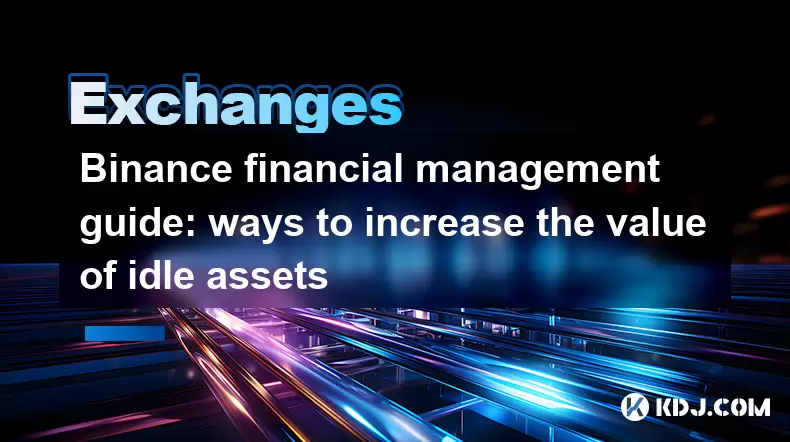
Binance financial management guide: ways to increase the value of idle assets
Jun 19,2025 at 11:22pm
Understanding Idle Assets in the Cryptocurrency SpaceIn the fast-paced world of cryptocurrency, idle assets refer to digital currencies that are not actively being used for trading, staking, or yield farming. Holding these funds in a wallet without utilizing them means missing out on potential growth opportunities. Binance, as one of the leading platfor...
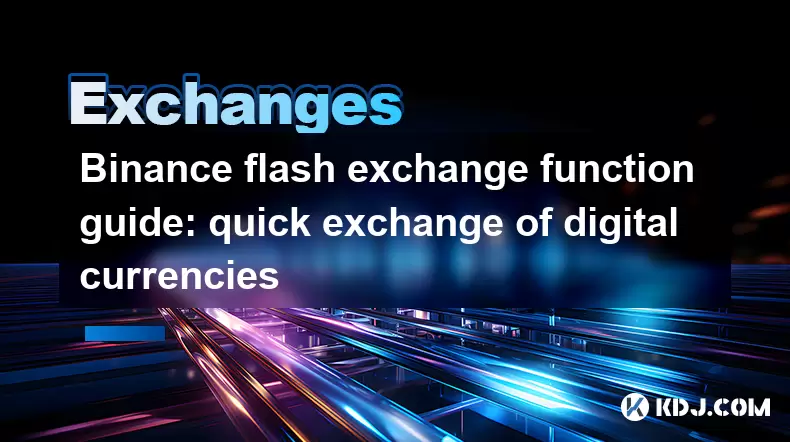
Binance flash exchange function guide: quick exchange of digital currencies
Jun 23,2025 at 12:29pm
What is the Binance Flash Exchange Function?The Binance Flash Exchange function is a powerful tool designed to allow users to instantly swap between supported cryptocurrencies without the need for placing traditional buy/sell orders. This feature simplifies the trading process by offering a direct exchange mechanism, eliminating the requirement to conve...

Binance spot market analysis: seize the best time to buy and sell
Jun 19,2025 at 04:56pm
Understanding the Binance Spot MarketThe Binance spot market is one of the most popular platforms for cryptocurrency trading globally. It allows users to trade digital assets at current market prices, making it essential for traders aiming to buy low and sell high. Unlike futures or margin trading, spot trading involves direct ownership of the asset aft...

Binance fund management secrets: reasonable allocation to increase income
Jun 22,2025 at 02:29pm
Understanding Binance Fund ManagementBinance fund management involves strategic allocation of your cryptocurrency assets to optimize returns while managing risk. The key to successful fund management lies in understanding how different investment options on the Binance platform can be utilized to create a diversified portfolio. This includes spot tradin...

Binance trading pair selection skills: find the best buying and selling combination
Jun 23,2025 at 02:49am
Understanding the Basics of Trading Pairs on BinanceBefore diving into trading pair selection skills, it's essential to understand what a trading pair is. On Binance, a trading pair refers to two cryptocurrencies that can be traded against each other. For example, BTC/USDT means Bitcoin is being traded against Tether. Each trading pair has its own liqui...

Binance new coin mining strategy: participate in Launchpool to earn income
Jun 23,2025 at 11:56am
What is Binance Launchpool and how does it work?Binance Launchpool is a feature introduced by the world’s largest cryptocurrency exchange, Binance, to allow users to earn new tokens through staking. This platform enables users to stake their existing cryptocurrencies (such as BNB, BUSD, or other supported assets) in exchange for newly launched tokens. T...

Binance financial management guide: ways to increase the value of idle assets
Jun 19,2025 at 11:22pm
Understanding Idle Assets in the Cryptocurrency SpaceIn the fast-paced world of cryptocurrency, idle assets refer to digital currencies that are not actively being used for trading, staking, or yield farming. Holding these funds in a wallet without utilizing them means missing out on potential growth opportunities. Binance, as one of the leading platfor...

Binance flash exchange function guide: quick exchange of digital currencies
Jun 23,2025 at 12:29pm
What is the Binance Flash Exchange Function?The Binance Flash Exchange function is a powerful tool designed to allow users to instantly swap between supported cryptocurrencies without the need for placing traditional buy/sell orders. This feature simplifies the trading process by offering a direct exchange mechanism, eliminating the requirement to conve...
See all articles

























































































